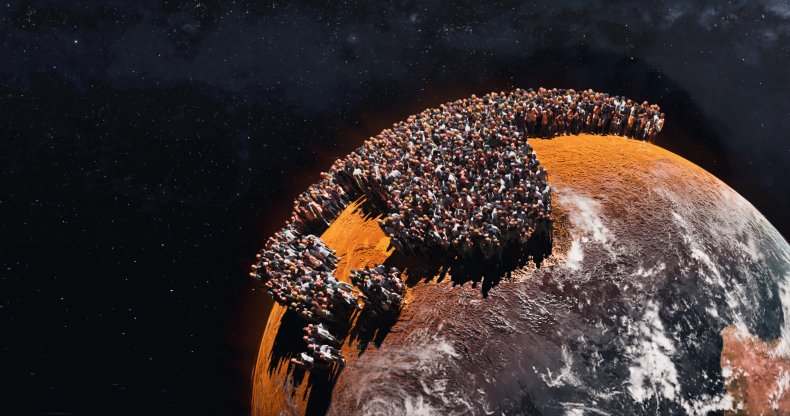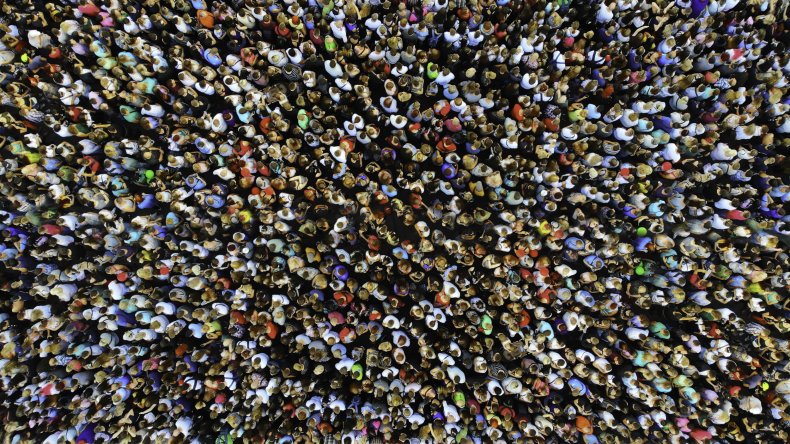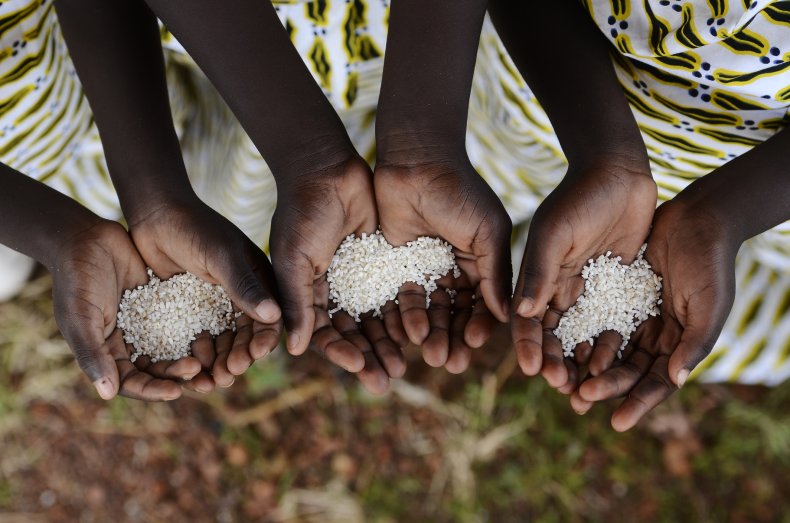PANDORA DEWAN
The global population will hit 8 billion on 15 November 2022, the U.N. has estimated. While this figure is a clear indicator of success in public health and development, it also poses a challenge for sustainability and social and economic growth.
Despite uncertainties in trends in worldwide fertility and mortality, previous U.N. population estimates have been fairly accurate.
"Thirty years ago, in its 1992 revision of the World Population Prospects, we projected the world population to reach 8 billion in early 2020," Bela Hovy, from the Population Division of the United Nations Department of Economic and Social Affairs, told Newsweek.
"There are many uncertainties about the population data and population estimates for many countries and regions, so even the year of reaching 8 billion has to be taken with caution," Tomas Sobotka, a senior researcher at the Wittgenstein Center for Demography and Global Human Capital, told Newsweek. "But, based on the best available data and estimates, we can conclude that the world is reaching 8 billion around this year."
 A stock image illustrates overpopulation. The Earth's population is expected to hit 8 billion in November.DRCARRRVEN/GETTY
A stock image illustrates overpopulation. The Earth's population is expected to hit 8 billion in November.DRCARRRVEN/GETTYAs recently as 1950, the global population was only 2.5 billion. It has since risen by over 300 percent. Luckily, Hovy said the rate of this increase is beginning to slow.
"While the world population continues to grow, it is growing now at a smaller rate than in recent decades. In 2020, the global population growth rate fell under one percent per year for the first time since 1950…Based on past and recent population trajectories, the world population is projected to reach 9 billion by 2037."
Population growth is expected to peak in the 2080s, when it will reach around 10.4 billion.
"The figure of 8 billion for the global population comes from the aggregation of the populations of all countries and areas of the world," he said.
"The production of quality population estimates and projections is dependent on the collection of reliable and timely demographic data…In the 2022 revision of World Population Prospects, 1,758 population censuses were considered. In addition, information on births and deaths from civil registration and vital statistics systems for 169 countries, and demographic indicators from 2,890 surveys, were considered in the present evaluation."
 A stock image shows a huge crowd of people. Although population growth has slowed, it is expected to continue until the 2080s.
A stock image shows a huge crowd of people. Although population growth has slowed, it is expected to continue until the 2080s.However, the data set is still incomplete.
"While a large amount of data was considered, gaps remain," Hovy said. "The collection of basic demographic information remains a challenge…Less than three quarters of all births taking place globally are properly registered, and only two thirds of all deaths are registered."
Reaching a population of 8 billion is a major milestone.
"This calls for a celebration as a major success in public health, improvements in sanitation and disease control, better access to clean drinking water and the development of antibiotics and vaccines," Hovy said.
Such advances in healthcare are key to social and economic development but the growing population is also causing a strain on our planet. On average, each person on Earth is responsible for the emission of four and a half tons of carbon dioxide every year, and with each new person we can expect an increase in emissions.
However, the actual contribution of an individual varies significantly depending on what country they are living in. For example, a person living in the U.S. is responsible for the emission of 14.24 tons per year, while a person living in the Democratic Republic of Congo emits just 0.03 tons.
"It would be a huge challenge if a world at 8 billion had living standards similar to those in high-income countries, due to the unsustainable patterns of production and consumption in these countries," Hovy said.
"The future growth of the world population will take place mostly in low-income and lower-middle-income countries," he said.
While people in these countries tend to emit less carbon dioxide on average, population growth in these areas comes with other problems.
Sobotka said: "Future population growth will be strongly concentrated in counties with high fertility today—especially in Sub-Saharan Africa—and a few lower and middle-income Asian countries. These are also the regions where the future pressure of population growth on resources, food production, and possible violent conflict will be strongest."
 Stock image of hungry children with only rice to eat. In 2021 828 million people faced hunger globally.BORGOGNIELS/GETTY
Stock image of hungry children with only rice to eat. In 2021 828 million people faced hunger globally.BORGOGNIELS/GETTYThere is also concern over how we will produce enough food to feed our growing population. In 2021, around 828 million people faced hunger globally.
"In terms of feeding an 8 billion world, there is enough food produced across the world to feed an ever rising human population," Hovy said. "However, current patterns of food production and consumption are unsustainable and must change to address the climate crisis."
Population growth presents significant challenges for sustainable development and social and economic progress, and will further stretch the resources of our planet. However, a deceleration in global population growth rates and a switch to a more sustainable economy will hopefully mitigate some of these negative effects.
"We know one thing for sure," Sobotka said. "The "8 billion day" on 15 November is a symbolic milestone."
No comments:
Post a Comment